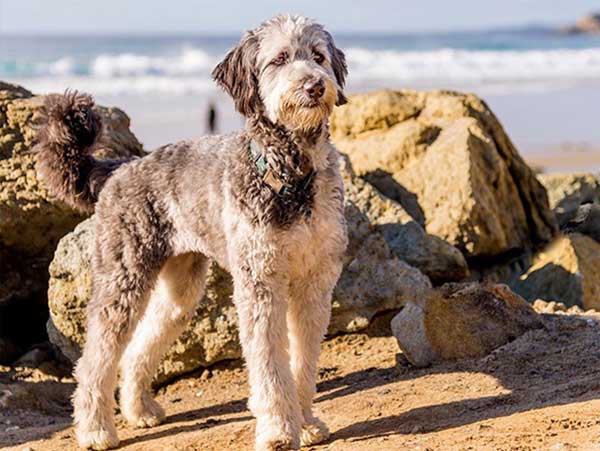Australian poodle
The Australian Poodle is a unique breed that has gained popularity for its intelligence, versatility, and hypoallergenic coat. Originating from Australia, these dogs are a mix of various poodle sizes and have become beloved companions for families around the world. In this article, we will explore the history, characteristics, care tips, training advice, health issues, and how to find reputable breeders for Australian Poodles.
The History of the Australian Poodle Breed
Table of Contents

The Australian Poodle breed is a relatively new variation of the standard poodle. It is believed to have originated in Australia in the early 20th century when breeders began crossing different sizes of poodles to create a versatile and intelligent dog. The goal was to produce a dog that was hypoallergenic, low-shedding, and suitable for families with allergies. The Australian Poodle quickly gained popularity for its friendly nature and adaptability.
Characteristics and Temperament of Australian Poodles

Australian Poodles are known for their friendly and intelligent nature. They are highly trainable and eager to please, making them great companions for families and individuals alike. These dogs are also hypoallergenic and low-shedding, making them a popular choice for those with allergies. Australian Poodles come in a variety of sizes, ranging from toy to standard, and they have a curly or wavy coat that requires regular grooming.
Australian Poodle Care and Grooming Tips

Australian Poodles require regular grooming to keep their coats in top condition. This breed is hypoallergenic and low-shedding, but their coats can become tangled and matted if not properly cared for. Regular brushing and grooming every 6-8 weeks are necessary to prevent matting. Australian Poodles also need regular exercise to stay healthy and happy, such as daily walks and playtime in a fenced yard.
Training Tips for Australian Poodle Owners

Training an Australian Poodle is relatively easy due to their high intelligence and eagerness to please. Positive reinforcement methods work best with this breed, as they respond well to praise and treats. Consistent training and socialization from a young age are important to ensure that Australian Poodles grow up to be well-behaved and obedient companions. Obedience classes and agility training can also be beneficial for this active and intelligent breed.
Health Issues Common in Australian Poodles

Like all dog breeds, Australian Poodles are prone to certain health issues, including hip dysplasia, progressive retinal atrophy, and von Willebrand’s disease. Regular veterinary check-ups and proper nutrition are essential to help prevent and manage these health concerns. It is also important to choose a reputable breeder who conducts health screenings on their breeding dogs to reduce the risk of genetic health problems in Australian Poodle puppies.
Finding Reputable Breeders of Australian Poodles

When looking for a reputable breeder of Australian Poodles, it is important to do your research and ask questions. Look for breeders who are registered with a national kennel club and who can provide health clearances for their breeding dogs. Visit the breeder’s facility to meet the dogs and see how they are raised. Reputable breeders will be transparent about their breeding practices and will prioritize the health and well-being of their dogs.
Comparison Table: Australian Poodle Sizes
| Size | Weight Range | Height Range |
|---|---|---|
| Toy | 4-6 pounds | 10-12 inches |
| Miniature | 10-15 pounds | 12-15 inches |
| Standard | 40-70 pounds | 15-22 inches |
In conclusion, the Australian Poodle is a versatile and intelligent breed that makes a wonderful companion for families and individuals. With proper care, training, and attention to health issues, Australian Poodles can live long and healthy lives. By finding a reputable breeder and following the care tips provided in this article, you can enjoy the love and companionship of an Australian Poodle for years to come.




Why do they call it Australian Poodle? It’s just a mix of poodles, right?
I like that Australian Poodles are highly trainable and eager to please.
The weights in the comparison table seem off. My toy poodle is heavier.
The breed started in Australia in the early 20th century by crossing different poodle sizes.
I learned a lot about the history and characteristics of Australian Poodles. Thanks!
I think they exaggerate the hypoallergenic thing. All dogs shed some hair.
Didn’t know Australian Poodles have health issues like hip dysplasia. Useful info.
Positive reinforcement is the best training method for Australian Poodles.
Nice article on Australian Poodles. Good to know about their care and grooming.
Do Australian Poodles really need that much exercise? Sounds like too much.
Are you sure all breeders do those health checks? Some just want money.
Helpful tips on training Australian Poodles. Positive reinforcement sounds great.
Great overview of Australian Poodles. Loved the part about their temperament.
It’s good to know that they come in different sizes like toy, miniature, and standard.
The sizes and weights don’t match other sources I’ve read about poodles.
Good advice on finding reputable breeders. Important to check health clearances.
I don’t think Australian Poodles need that much grooming. My dog is fine with less.
Thanks for the training advice. Socializing from a young age seems essential.
Visiting the breeder’s facility to meet the dogs is a good idea before buying.
Progressive retinal atrophy sounds serious. Maybe they shouldn’t breed them at all.
Regular grooming every 6-8 weeks is important for Australian Poodles.
Not convinced that all Australian Poodles are easy to train. Mine is stubborn.
I don’t trust breeders. Better to adopt from a shelter.
Finding a reputable breeder who does health screenings is very important.
I learned that Australian Poodles are hypoallergenic and low-shedding.
Interesting to see the size comparison table for Australian Poodles. Very informative.
Health issues like hip dysplasia and retinal atrophy are common in this breed.
Interesting info about Australian Poodles. Didn’t know they were hypoallergenic.
Regular exercise like daily walks is necessary for their health and happiness.
Important to know they require regular grooming to avoid matting. Useful tip.